Hi, it’s me Ben, one of the account directors here at The Faith Agency. Before I worked The Faith Agency, one of my first jobs in marketing was to handle search engine optimisation (SEO) clients for a local digital agency. While I was never responsible for the actual optimisation or link building functionality, I know just enough to help businesses set up an appropriate keyword strategy and implement it on page. While this doesn’t consist of ongoing SEO activity, it is a good start to enhance the hygiene of a site and give businesses’ marketing managers a focus for what content should be developed moving forward.
We recently completed one of these SEO hygiene projects for Spirit Technology, a fast-growing managed services business based here in Melbourne. We knew the Marketing Manager from a previous role and were tasked with helping improve the site’s standing on Google (in addition to handling some paid LinkedIn advertising activity). The background to the project is that Spirit had implemented a new website around the start of 2023 and had seen a precipitous drop in their organic search results over the following months; something was clearly not right with the new site.
Our first priority is to review the website and its content to identify what the scope of the project would contain. While SEO is an opaque combination of key signals being tweaked and aligned across the entire site, there are a few primary elements that need to be set correctly to help create the biggest impact. Having reviewed the site, it seemed that many of these weren’t implemented.
Next, we figure out the key landing pages and identify keywords that we be set for each page. While you don’t want to have the same keyword for multiple pages, you do want your keywords (key phrases, really) to be built up of similar base words so that you get a ‘halo’ effect for the site when it comes to these words. The list of pages identified in this step was 20, and we allocated specific keywords for each, all workshopped and approved by the client.
Then, it comes time to implementing. Simple things like page titles, meta descriptions and alt-tags are the first priority in the back end of the site, while reviewing on-page copy and adjusting to include references of our keywords is vitally important. At this point, decisions must be made about how optimised the site needs to be versus the impact on the legibility of the content. The question you need to ask yourself is, “are we trying to appeal to users or robots?”. We don’t recommend the full scale, heavy duty optimisation that you might have seen so prevalent 8-10 years ago; instead, a nuanced approach is always key. We want to tell Google about the site, but in a way that doesn’t impact users who end up there.
Ultimately, we worked through the 20 pages, making critical changes across the board, while also providing content ideation for future blog articles, a key function of on-going optimisation, given the need for fresh, compelling content backed up with keyword optimisation. It’s still early days, but we’ve seen a small bump in organic traffic plus a number of keywords ranking that were previously unranked or ranking in lower positions. Overall, it’s been quite a successful little campaign.
It is important to note that this isn’t the only SEO that we can do, and in fact work closely with partner agencies to help set-up ongoing SEO strategy, including backlinking, for several of our clients. SEO should never been seen as a silver bullet to deliver the unrealised activity that your business is missing, but if you are interested in learning more about how we can help your business’ web traffic grow, get in touch with us today!

